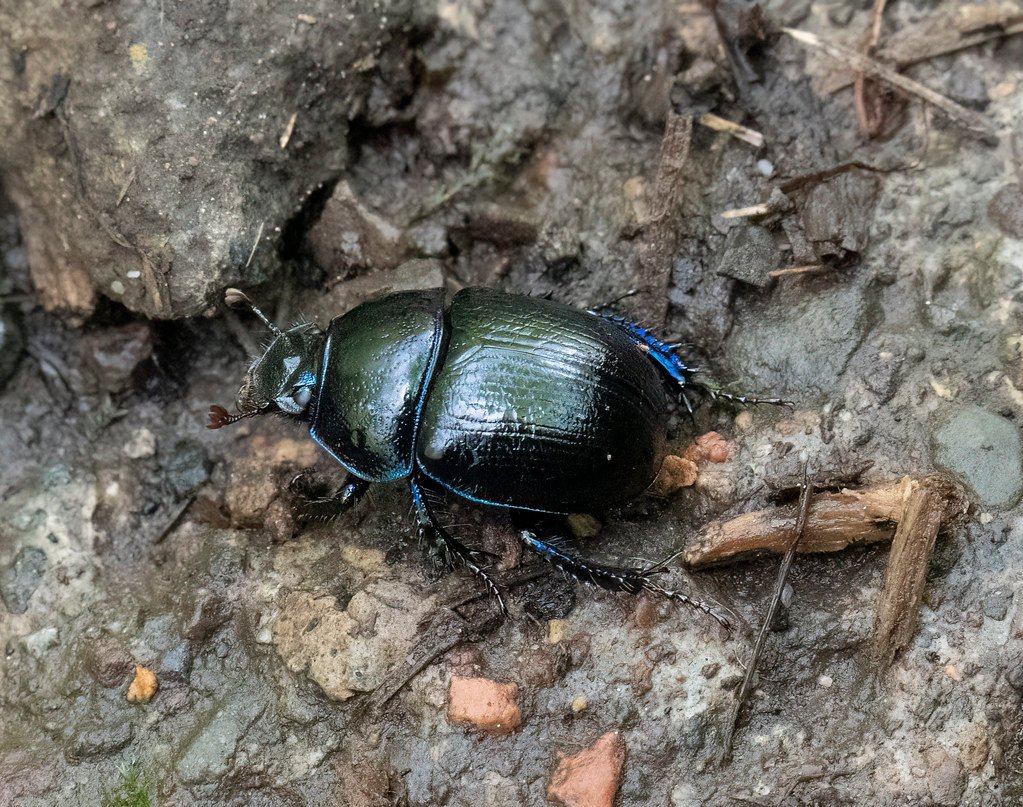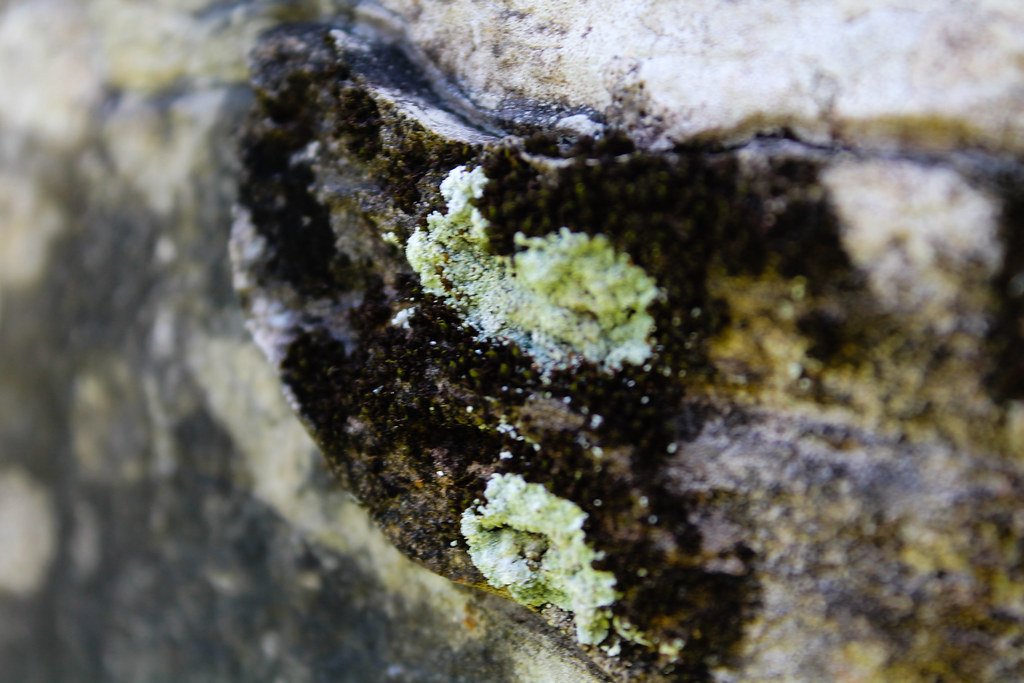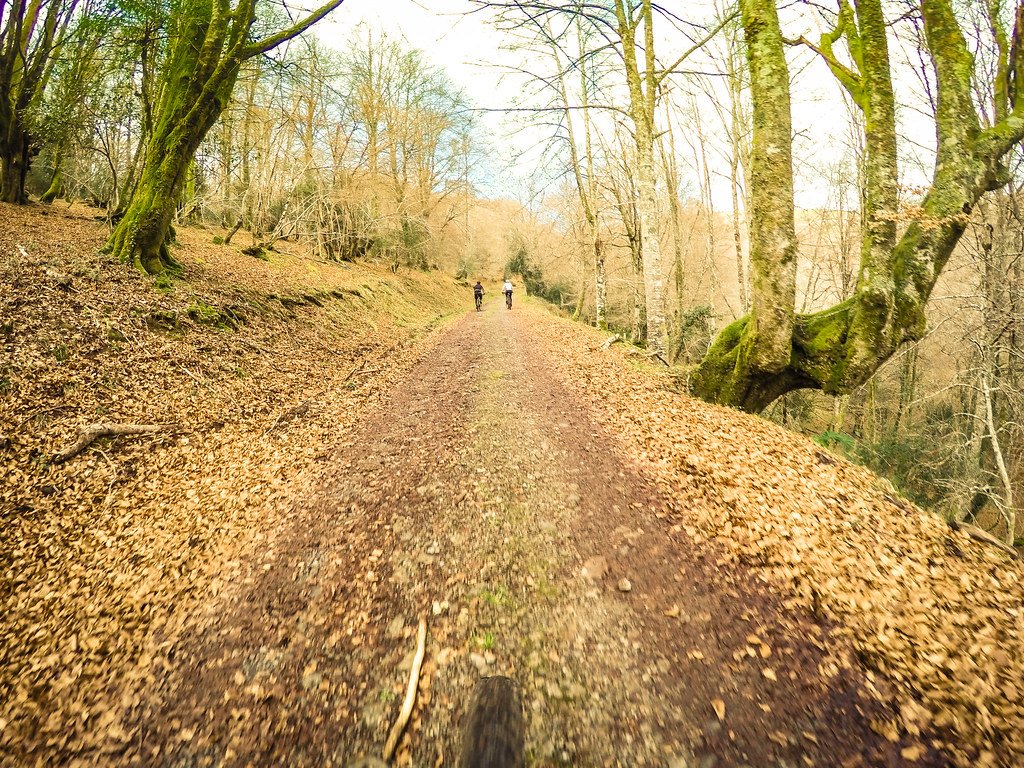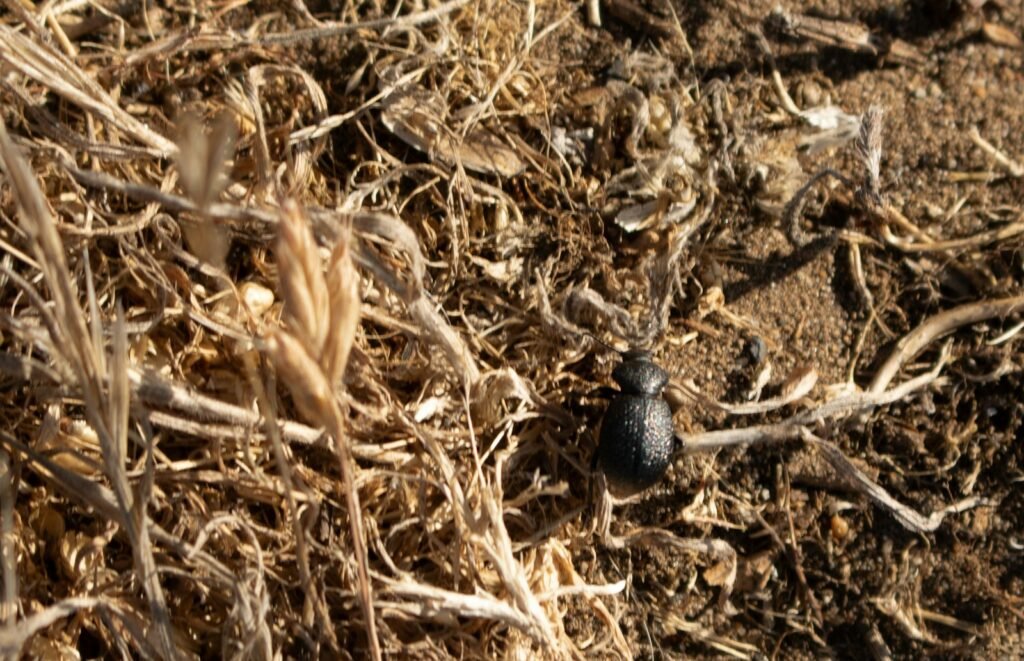Picture this: you’re walking through a pristine forest, breathing in the fresh air, marveling at towering trees and delicate wildflowers. What you might not realize is that beneath your feet lies nature’s most underestimated superhero – waste. From the tiniest microbe’s excretion to the massive piles left by elephants, what we politely call “waste” is actually the engine that powers our planet’s most essential processes. This isn’t just about recycling nutrients; it’s about understanding how life itself depends on what organisms leave behind.
The Ancient Art of Turning Trash Into Treasure

Long before humans invented composting bins, nature perfected the ultimate recycling system. Every piece of organic waste, from fallen leaves to animal droppings, becomes part of an intricate web that sustains life on Earth. Think of it as nature’s own circular economy, where nothing truly goes to waste.
The process began billions of years ago when the first organisms started breaking down dead matter. These early decomposers didn’t just clean up the mess – they transformed it into the building blocks of life itself. Today, this same system operates on every continent, in every ecosystem, creating the foundation for all terrestrial life.
What’s truly remarkable is how efficient this system has become over evolutionary time. While human recycling systems achieve maybe 30-40% efficiency, nature consistently hits near 100% recycling rates in healthy ecosystems.
Microbial Masterminds: The Invisible Workforce

Hidden from our naked eyes, trillions of microscopic workers toil away in soil, water, and even the air we breathe. These bacteria, fungi, and other microorganisms are the true champions of waste processing. They break down complex organic molecules into simpler compounds that plants can absorb and use.
A single teaspoon of soil contains more microorganisms than there are people on Earth. These tiny creatures work around the clock, decomposing everything from dead insects to massive fallen trees. Without them, our planet would be buried under layers of undecomposed organic matter within just a few years.
Some of these microorganisms are so specialized that they can only break down specific types of waste. Others are generalists, capable of tackling almost any organic material they encounter. Together, they form processing teams that would make any industrial operation jealous.
Soil’s Secret Recipe: Death Becomes Life

Healthy soil isn’t just dirt – it’s a living, breathing ecosystem where waste transformation happens every second. When organic matter hits the ground, it triggers a cascade of biological processes that would make any chemistry lab envious. Earthworms, insects, and countless other creatures work together to shred, digest, and transform waste into rich humus.
This black gold that forms from decomposed waste is what makes plants thrive. It holds water like a sponge, provides essential nutrients, and creates the perfect environment for root systems to flourish. Without this continuous cycle of waste breakdown, agriculture as we know it simply couldn’t exist.
The most fertile soils on Earth, like those in the Amazon basin or the American Midwest, owe their richness to thousands of years of waste accumulation and processing. Every leaf that falls, every creature that dies, adds to this incredible storehouse of nutrients.
Dung Beetles: Nature’s Ultimate Recycling Engineers

If there were awards for the most important insects on Earth, dung beetles would win hands down. These remarkable creatures can detect fresh dung from miles away and waste no time in getting to work. They roll, bury, and process animal waste with an efficiency that puts modern waste management systems to shame.
A single elephant dropping can support hundreds of beetle species, each playing a unique role in breaking down and distributing nutrients. Some beetles roll dung into perfect balls and bury them as food stores for their larvae. Others tunnel directly into the waste, creating underground networks that aerate soil and distribute nutrients.
Without dung beetles, grazing lands would quickly become unusable wastelands. In Australia, when European settlers introduced cattle without bringing native dung beetles, the landscape began to suffer until African dung beetles were imported to handle the massive amounts of cattle waste.
The Nitrogen Highway: How Waste Feeds the World

Nitrogen is essential for all life, but most organisms can’t use the nitrogen gas that makes up 78% of our atmosphere. This is where waste processing becomes absolutely critical. When organic matter decomposes, specialized bacteria convert nitrogen into forms that plants can actually absorb and use.
This process, called the nitrogen cycle, is entirely dependent on waste breakdown. Dead plants, animal excrement, and decomposing creatures all contribute nitrogen to the soil. Without this constant recycling, plant growth would grind to a halt, and food webs would collapse.
Farmers have known about this connection for thousands of years, using animal manure to fertilize crops. Modern agriculture still relies heavily on this principle, though synthetic fertilizers have supplemented natural waste processing in many regions.
Marine Waste Wonders: Ocean Cleanup Crews

The ocean has its own incredible waste processing system that operates on a scale almost too large to comprehend. Marine snow – a constant shower of dead plankton, fish waste, and other organic particles – feeds entire ecosystems in the deep sea. This biological waste acts like an underwater conveyor belt, transporting nutrients from surface waters to the ocean floor.
Deep-sea creatures have evolved specialized feeding strategies to intercept and process this falling organic matter. Some fish have enormous mouths to capture as much marine snow as possible. Others have developed bioluminescent lures to attract prey in the perpetual darkness.
Even whale falls – the carcasses of dead whales that sink to the ocean floor – support unique ecosystems for decades. These massive packages of nutrients create oasis-like communities in the nutrient-poor deep sea, supporting hundreds of species found nowhere else on Earth.
Forest Floor Factories: Where Leaves Become Life

Every autumn, deciduous forests shed billions of leaves that create a thick carpet on the forest floor. This isn’t just natural litter – it’s the raw material for one of nature’s most sophisticated processing operations. Fungi, insects, and bacteria work together to break down this leaf litter, releasing nutrients that feed the very trees that dropped them.
The process is so efficient that tropical rainforests, growing on some of the poorest soils on Earth, can sustain incredible biodiversity simply through rapid waste recycling. Nutrients barely have time to reach the soil before they’re absorbed by shallow root systems and mycorrhizal networks.
Different tree species contribute different nutrients through their leaf litter. Oak leaves are rich in tannins, maple leaves provide readily available sugars, and pine needles add acidity to the soil. This diversity creates complex soil chemistry that supports an amazing variety of plant and animal life.
Gut Reactions: Internal Waste Processing Systems

The waste processing happening inside animal bodies is just as important as what occurs in the environment. Every creature’s digestive system hosts billions of microorganisms that break down food and create essential nutrients. These internal ecosystems are so important that some animals can’t survive without their microbial partners.
Termites couldn’t digest wood without the protozoans living in their guts that break down cellulose. Cows and other ruminants depend on bacteria to process grass and other plant materials that would otherwise be indigestible. Even humans rely on gut bacteria to synthesize certain vitamins and process complex carbohydrates.
When these internal waste processors are disrupted by antibiotics or disease, the entire organism suffers. This highlights how interconnected waste processing systems are at every level of life, from the cellular to the ecosystem scale.
Composting Champions: Animals That Garden

Some animals have taken waste processing to an art form, essentially becoming ecosystem engineers that shape entire landscapes through their waste management activities. Beavers create wetlands that become incredibly productive ecosystems, partly through their waste contributions that fertilize aquatic plants and support diverse food webs.
African elephants are often called “gardeners of the forest” because their massive dung piles, scattered across vast territories, create fertile patches where new plants can establish. Seeds that pass through elephant digestive systems are not only dispersed but often have better germination rates thanks to the natural fertilizer they’re planted in.
Even smaller animals play crucial roles. Prairie dogs create underground burrow systems that mix and aerate soil while concentrating nutrients in specific areas. Their waste processing activities help maintain the health of grassland ecosystems across North America.
Seasonal Cycles: Waste’s Perfect Timing

Nature has evolved incredible timing mechanisms that synchronize waste production with nutrient demands. Many animals time their breeding seasons to coincide with peak nutrient availability from decomposing organic matter. Spring migrations often follow patterns that maximize access to areas where winter die-offs have created rich feeding opportunities.
Trees drop their leaves just as temperatures cool enough to slow decomposition, ensuring that nutrients are released gradually throughout winter and early spring when growing plants need them most. Even the timing of fruit production is coordinated with seed dispersal needs and seasonal patterns of waste accumulation.
This temporal coordination means that waste processing systems operate with clockwork precision across different timescales, from daily cycles of microbial activity to seasonal patterns of nutrient cycling that span entire years.
Urban Ecosystems: City Waste Processing

Cities create unique challenges and opportunities for natural waste processing systems. Urban soils, often heavily compacted and contaminated, struggle to support the diverse communities of decomposers found in natural ecosystems. Yet nature finds ways to adapt, with some species actually thriving in urban environments.
Urban trees drop enormous quantities of leaves that city dwellers often view as a nuisance, but these represent valuable resources for soil health. Cities that allow leaf litter to decompose naturally in parks and green spaces create much healthier urban forests than those that remove all organic debris.
Some cities are learning to work with natural waste processing systems rather than against them. Green roofs, rain gardens, and constructed wetlands all harness natural decomposition processes to manage urban waste while creating habitat and improving air and water quality.
Climate Connections: Waste Processing and Weather

The global climate system is intimately connected to waste processing cycles. Decomposing organic matter releases carbon dioxide, methane, and other greenhouse gases, but it also stores carbon in soil and creates conditions that influence local weather patterns. Healthy soils with active decomposer communities can store enormous amounts of carbon, helping to moderate climate change.
Wetlands, which are essentially nature’s waste processing centers, influence regional climate by moderating temperatures and humidity. The methane produced by decomposition in wetlands is a potent greenhouse gas, but these ecosystems also provide crucial climate services like flood control and carbon sequestration.
Changes in temperature and precipitation patterns affect decomposition rates, creating feedback loops that can either accelerate or slow climate change. Understanding these connections is crucial for predicting how ecosystems will respond to changing global conditions.
Extreme Environments: Waste Processing at the Limits

Even in Earth’s most extreme environments, waste processing continues in remarkable ways. In Antarctic dry valleys, where temperatures rarely rise above freezing and humidity is almost zero, specialized microorganisms slowly break down organic matter over centuries. These slow-motion ecosystems operate on geological timescales but follow the same basic principles as temperate ecosystems.
Desert environments have evolved unique strategies for processing the limited organic waste available. Cryptobiotic soil crusts, made up of bacteria, fungi, and algae, create biological processing centers that can remain dormant for years until rare rainfall events trigger intense periods of decomposition and nutrient cycling.
Deep underground, in caves and groundwater systems, entire ecosystems exist based on processing organic matter that filters down from surface environments. These hidden worlds demonstrate that waste processing occurs literally everywhere life exists on our planet.
Symbiotic Solutions: Partnerships in Waste Processing

Some of nature’s most elegant waste processing solutions involve partnerships between different species. Lichens, which are actually partnerships between fungi and algae, can break down rock surfaces and process atmospheric pollutants, creating soil in environments where nothing else can survive. These biological partnerships essentially create their own waste processing systems from scratch.
Mycorrhizal networks connect plant roots with fungal partners that help process organic waste in soil and transfer nutrients between different plants. These underground networks can span entire forests, creating communication and resource-sharing systems that optimize waste processing across huge areas.
Some plants have evolved to attract specific animals that help with waste processing. Pitcher plants provide shelter for insects that deposit waste in the plant’s digestive chambers, creating a mutually beneficial waste processing arrangement that feeds both partners.
Human Interference: When Waste Systems Break Down

Human activities often disrupt natural waste processing systems in ways that can have cascading effects on entire ecosystems. Agricultural practices that remove crop residues or rely heavily on synthetic fertilizers can deplete soil communities of decomposers, reducing the system’s ability to process organic waste naturally.
Pollution introduces materials that natural decomposers can’t process effectively. Plastics, heavy metals, and synthetic chemicals can accumulate in ecosystems, disrupting the delicate balance of waste processing communities. Some pollutants even poison the microorganisms responsible for breaking down organic matter.
However, humans are also learning to enhance natural waste processing systems. Composting programs, organic farming practices, and ecological restoration projects all work to support and strengthen the natural cycles that keep ecosystems healthy.
Future Frontiers: Innovations in Biological Waste Processing

Scientists are discovering new applications for natural waste processing systems that could revolutionize how we manage human waste and environmental contamination. Researchers are developing bacterial communities that can break down specific pollutants, essentially creating designer decomposer communities for environmental cleanup.
Biotechnology is revealing the genetic mechanisms that make some organisms such effective waste processors. This knowledge could lead to enhanced composting systems, more efficient wastewater treatment, and even biological systems that can process plastic waste and other persistent pollutants.
The principles learned from studying natural waste processing are inspiring new approaches to sustainable living. Closed-loop systems that mimic natural cycles could eliminate waste entirely, creating human communities that operate more like natural ecosystems.
The Circle Unbroken: Waste as Life’s Foundation

From the smallest bacterial cell to the largest whale, every living thing participates in the endless cycle of waste processing that keeps our planet habitable. What we call waste is actually the raw material for life itself, transformed through countless biological processes into the nutrients that fuel growth, reproduction, and evolution.
This universal recycling system has been operating for billions of years, constantly adapting and evolving to process new types of organic matter. It’s more reliable than any human-made system, more efficient than any industrial process, and more essential than any technology we’ve ever developed.
Understanding and respecting these natural waste processing systems isn’t just about environmental science – it’s about recognizing our place in the web of life that connects every organism on Earth. The next time you see decomposing leaves, animal droppings, or any other natural “waste,” remember that you’re witnessing one of the most important processes on our planet. Did you ever imagine that something so humble could be so essential to life itself?




